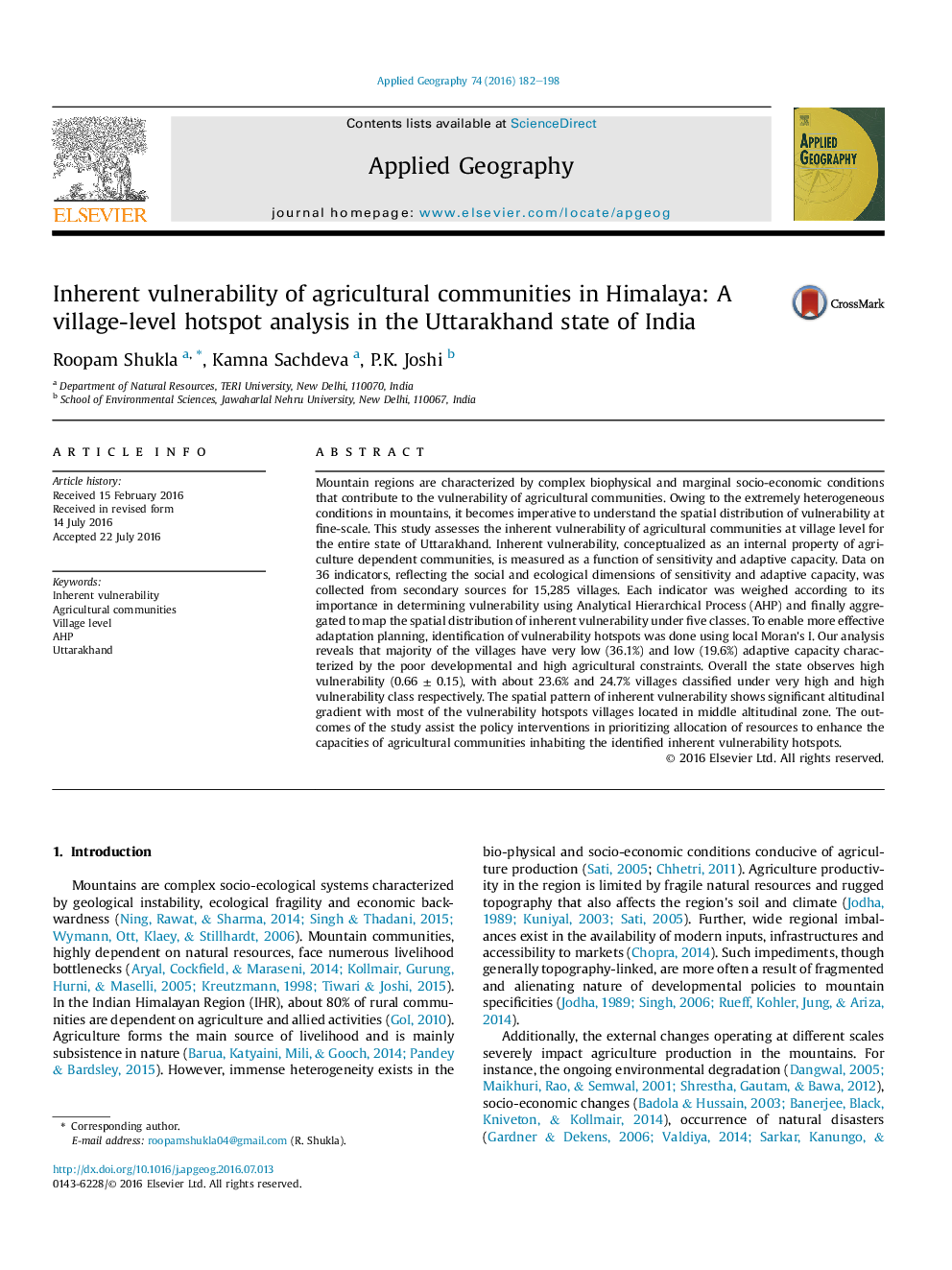| کد مقاله | کد نشریه | سال انتشار | مقاله انگلیسی | نسخه تمام متن |
|---|---|---|---|---|
| 83124 | 158687 | 2016 | 17 صفحه PDF | دانلود رایگان |
• Inherent vulnerability assessment of Himalayan agricultural communities.
• Village level assessment for the entire state of Uttarakhand.
• Integration of ecological and social indicators.
• Identification of inherent vulnerability hotspots to assist in adaptation planning.
Mountain regions are characterized by complex biophysical and marginal socio-economic conditions that contribute to the vulnerability of agricultural communities. Owing to the extremely heterogeneous conditions in mountains, it becomes imperative to understand the spatial distribution of vulnerability at fine-scale. This study assesses the inherent vulnerability of agricultural communities at village level for the entire state of Uttarakhand. Inherent vulnerability, conceptualized as an internal property of agriculture dependent communities, is measured as a function of sensitivity and adaptive capacity. Data on 36 indicators, reflecting the social and ecological dimensions of sensitivity and adaptive capacity, was collected from secondary sources for 15,285 villages. Each indicator was weighed according to its importance in determining vulnerability using Analytical Hierarchical Process (AHP) and finally aggregated to map the spatial distribution of inherent vulnerability under five classes. To enable more effective adaptation planning, identification of vulnerability hotspots was done using local Moran's I. Our analysis reveals that majority of the villages have very low (36.1%) and low (19.6%) adaptive capacity characterized by the poor developmental and high agricultural constraints. Overall the state observes high vulnerability (0.66 ± 0.15), with about 23.6% and 24.7% villages classified under very high and high vulnerability class respectively. The spatial pattern of inherent vulnerability shows significant altitudinal gradient with most of the vulnerability hotspots villages located in middle altitudinal zone. The outcomes of the study assist the policy interventions in prioritizing allocation of resources to enhance the capacities of agricultural communities inhabiting the identified inherent vulnerability hotspots.
Journal: Applied Geography - Volume 74, September 2016, Pages 182–198
